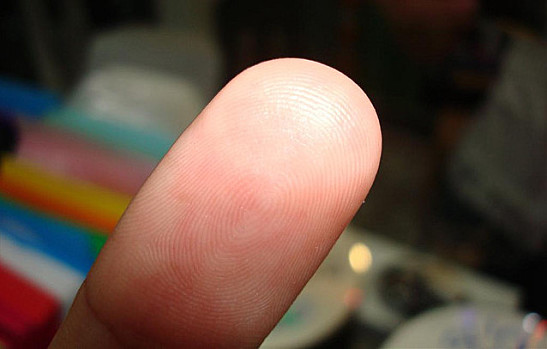The Touch ID feature of the iPhone 5s allows users to unlock their phone simply by swiping their fingertip across the Home button. This new feature uses fingerprint authentication technology and offers a pretty simple way of securing a phone. In a world where convenience reigns supreme, the touch feature makes it easy for users to protect their important information, instead of having to type in a complex passcode each time they access their device (or go without protection). Yet, does this feature actually offer real-world usability, or is it just a marketing gimmick?
According to Apple, “With iPhone 5s, getting into your phone is faster, easier, and even a little futuristic.” Apple touts the features as convenient and “highly secure.” Users can also use fingerprint authentication to make purchases from the iTunes and App Store, so they don’t need to enter a password. Interestingly, Apple has also given the Touch ID the capability of 360-degree readability. This means that you can swipe your fingertip despite your phone’s orientation. You can also enter up to five alternative fingerprints, so you can allow your family members access to your phone. However, they won’t be able to make purchases.
On older models of the iPhone, entering a passcode to activate the device could lead to frustration. Users often lowered the difficulty of their passwords (such as the obvious “1234”) — or turned off the function altogether. That meant that if their phone ever fell into the wrong hands, their bank details and other sensitive data would be left open to whoever found the device.
The technology behind the Touch ID (explained in-depth in this video) is pretty neat. The sensor is protected by scratch-resistant sapphire crystal. A steel ring encompasses the sensor and can detect when your finger passes over it. Then the sensor takes an image of your fingerprint and analyses it by three fingerprint characteristics: arch, loop, and whorl. Additionally, it reads details in the ridges of the fingerprint and changes in ridge direction that are smaller than the eye can see. This means it won’t likely be fooled by fake fingerprints or the like.
In order to activate the fingerprint sensor, users must repeatedly hold their finger against the Home button in order for the sensor to get a complex picture of their fingerprint. Interestingly, each time you swipe your finger across the sensor, it becomes better adept at identifying your finger.
This new feature offers top-notch security to which passwords cannot compare. A fingerprint makes the perfect form of identity protection because it’s always with you and completely unique. However, using fingerprints to unlock your device does have some downsides. For one, while Apple claims the fingerprint data remains locked away on your phone and never uploaded onto their servers, it only stands to reason that the data can leak out once it’s created.
Additionally, users can bypass the fingerprint sensor and just input passwords instead. However, it remains unclear if users can set up a multi-layered security approach, wherein they would have to swipe their fingerprint in addition to entering a password to unlock their device.
So is the Touch ID a gimmick or the real deal? It certainly appears to offer convenience and security to the average user. However, it unlocks a whole new issue with regard to identity theft and misuse of the fingerprint data. It’s ultimately up to you if you want to jump onboard with this new feature, or skip it.
image courtesy of Flickr
[cf]skyword_tracking_tag[/cf]

